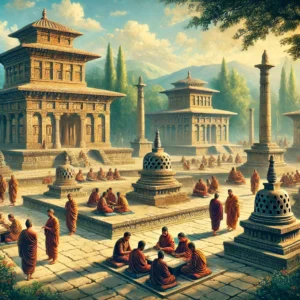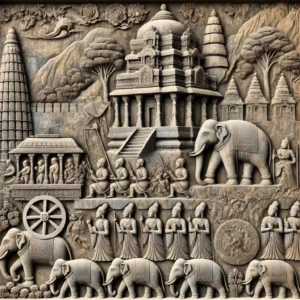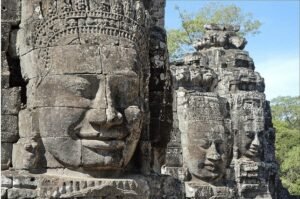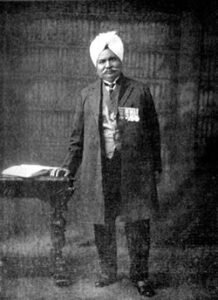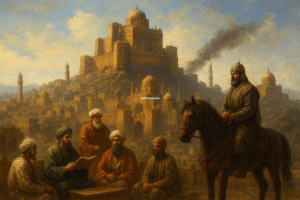The Kannauj Triangle is one of the most fascinating episodes in medieval Indian history, marked by a prolonged struggle among three major empires: the Gurjara-Pratiharas, the Palas, and the Rashtrakutas. At its core was the city of Kannauj, located in present-day Uttar Pradesh, which held immense strategic, economic, and symbolic significance. The conflict, lasting from the 8th to 10th centuries, shaped the political landscape of the Indian subcontinent, leaving a legacy of fragmentation, cultural exchange, and imperial ambition.
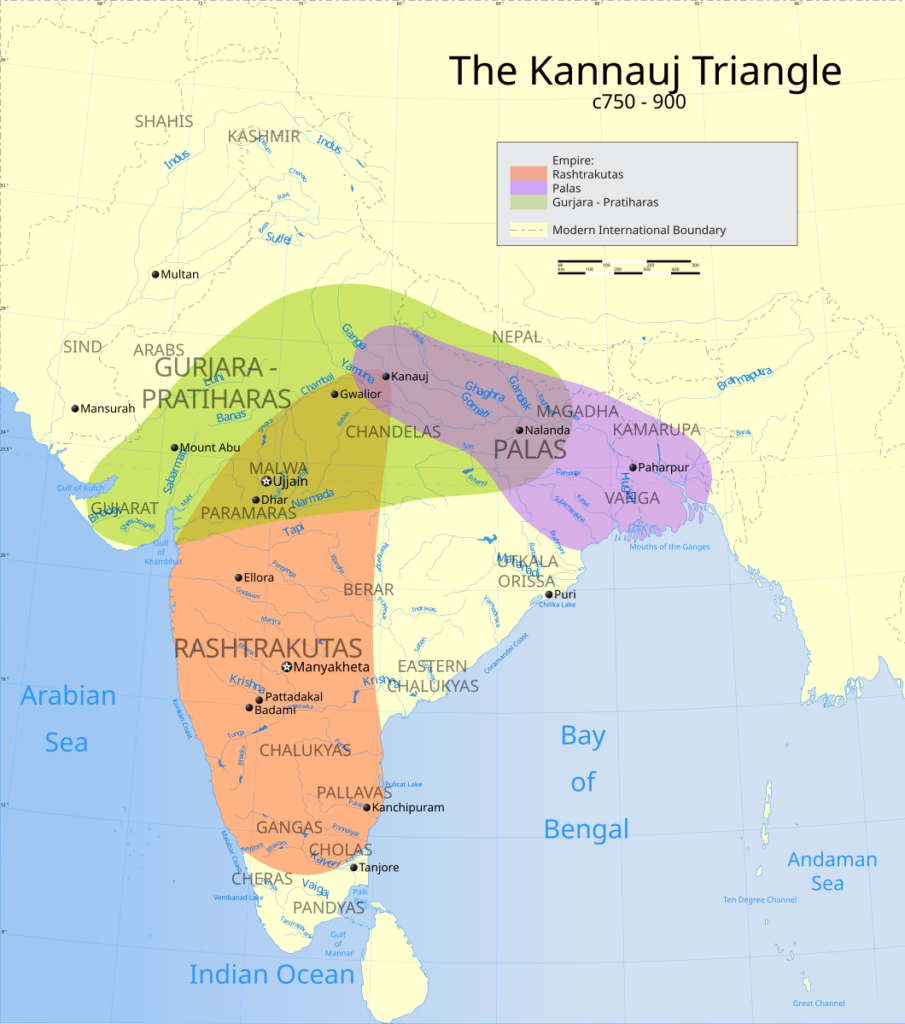
The Significance of Kannauj
Kannauj was not merely a city; it was a symbol of political legitimacy and a vital economic center. Strategically located on key trade routes connecting northern and central India, Kannauj was a prosperous hub for commerce and culture. Its association with imperial glory traced back to the Gupta Empire, which had established the city as a center of power and administration. For emerging dynasties in medieval India, controlling Kannauj was synonymous with asserting dominance over northern India and legitimizing their claims to imperial authority.
The Three Contenders
- Gurjara-Pratiharas:
Based in western and northern India, the Gurjara-Pratiharas rose to prominence in the 8th century. They were initially based in present-day Rajasthan and Gujarat but expanded their influence across northern India. Under rulers like Nagabhata II and Mihira Bhoja, the Pratiharas emerged as a dominant force, with Kannauj serving as their imperial capital for much of their reign. - Palas:
The Palas originated in Bengal, where they established a powerful Buddhist dynasty under Gopala I. His successor, Dharmapala, extended Pala influence westward and briefly occupied Kannauj. However, the Palas struggled to maintain control over the city due to their geographic distance from it and resistance from rival powers. - Rashtrakutas:
The Rashtrakutas were a southern dynasty based in the Deccan Plateau, known for their military prowess and cultural achievements. Under rulers like Dhruva Dharavarsha, Govinda III, and Krishna III, they launched ambitious campaigns into northern India. Although Kannauj was far from their base, the Rashtrakutas sought to expand their sphere of influence by participating in the struggle for the city.
The Tripartite Struggle
The struggle for Kannauj unfolded over two centuries, with each dynasty vying for supremacy.
- The Early Phase (8th Century):
The conflict began with the rise of the Pratiharas and the Palas. Dharmapala, the Pala king, initially gained control over Kannauj and even installed a vassal ruler, but his hold was short-lived. The Pratiharas, under Nagabhata II, defeated the Palas and established their dominance over the city. - Rashtrakuta Interventions (9th Century):
The Rashtrakutas entered the fray during the reign of Dhruva Dharavarsha, who invaded northern India and defeated both the Palas and the Pratiharas. Although the Rashtrakutas did not establish a lasting presence in Kannauj, their repeated interventions destabilized the region and weakened the other contenders. - The Height of the Conflict (10th Century):
The struggle reached its peak under Mihira Bhoja of the Pratiharas, who consolidated his hold over Kannauj and ruled as one of the most powerful monarchs of his time. However, the Rashtrakutas under Krishna III launched another campaign into northern India, temporarily occupying Kannauj. The Palas, by this time, had lost much of their influence and could no longer compete effectively.
Impacts of the Kannauj Triangle
- Political Fragmentation:
The tripartite struggle prevented the emergence of a single dominant power in northern India. The constant warfare and shifting alliances left the region politically fragmented, paving the way for smaller kingdoms and new powers like the Chauhans and Chandelas to rise in later centuries. - Economic Disruption:
Kannauj’s importance as a trade hub made it a target for repeated invasions, disrupting commerce and causing economic instability. The prolonged conflict also drained the resources of the competing dynasties, weakening their ability to govern effectively. - Cultural Exchange:
Despite the warfare, the interactions between the Pratiharas, Palas, and Rashtrakutas facilitated cultural exchange. The Rashtrakutas, known for their patronage of Hinduism, Jainism, and architecture (e.g., the Ellora Caves), influenced the cultural landscape of northern India. The Palas, as patrons of Buddhism, contributed to the spread of Buddhist art and education through institutions like Nalanda and Vikramashila. - Decline of Dynasties:
The protracted struggle weakened all three dynasties. The Pratiharas eventually succumbed to internal strife and invasions by the Turkish Ghaznavids, the Rashtrakutas were overthrown by the Chalukyas, and the Palas lost their hold over Bengal to regional powers like the Senas.
Legacy of the Kannauj Triangle
The Kannauj Triangle exemplifies the complexities of medieval Indian politics, where the quest for supremacy often led to prolonged conflicts and shifting alliances. While no single empire emerged victorious, the struggle left an indelible mark on the political, cultural, and economic history of India.
Today, Kannauj is remembered more for its association with the ancient perfume industry than its imperial past, but its historical significance as the epicenter of the tripartite struggle remains a key chapter in India’s rich history.

